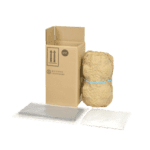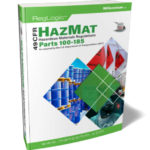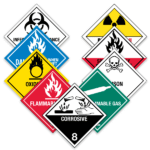49 CFR Security Plans
According to the DOT, millions of tons of hazardous materials (hazmat) are safely transported by ground, air, and sea daily. Regardless of size (ounces, gallons, or thousands of gallons), hazardous materials pose safety risks to people and their surroundings.
For this reason, PHMSA regulates items that pose inherent safety risks as hazardous materials under 49 CFR Part 100-199.
Periodically, through its outreach program, the Department of Transportation, Pipeline and Hazardous Materials Safety Administration (PHMSA) develops tools to help the public and industry stakeholders comply with the 49 CFR regulations.
The latest tool is called SECURITY REQUIREMENTS and Considerations for Hazardous Materials Transportation. The full document can be found on PHMSA’s website https://www.phmsa.dot.gov/training/hazmat/security-requirements-brochure
Safety and Security Plans can be found in 49 CFR, Subpart I, called Safety and Security Plans. Further information can be found under Training Requirements in Subpart H, Part 172.704.
This tool is broken into four sections:
- Section 1: Do I need a security plan?
- Section 2: What must my security plan include?
- Section 3: Which security measures to include
- Section 4: Training requirements
Not all companies that offer hazardous materials for transport need a security plan, according to Part 172.800. The requirements are based on the hazard class and how much of that hazard class you ship.
This section introduces a term called “large bulk quantity.” According to the definition, this means:
“Large bulk quantity” refers to a quantity greater than 3,000 kg. (6,614 lbs.) for solids or 3,000 liters (792 gal.) for liquids and gases in a single packaging such as a cargo tank motor vehicle, portable tank, tank car, or other bulk container.”
The requirements are:
- Any quantity of Division 1.1, 1.2, or 1.3 material.
- A quantity of Division 1.4, 1.5, or 1.6 material requiring placarding
- A large bulk quantity of Division 2.1 material.
- A large bulk quantity of Division 2.2 material with a subsidiary hazard of 5.1.
- Any quantity of a material poisonous by inhalation
- A large bulk quantity of a Class 3 material in Packing Group I or II.
- A quantity of desensitized explosives meeting the definition of Division 4.1 or Class 3 material requiring placarding
- A large bulk quantity of Division 4.2 material in Packing Group I or II.
- A quantity of Division 4.3 material requiring placarding.
- A large bulk quantity of Division 5.1 material in Packing Groups I and II; perchlorates; ammonium nitrate, ammonium nitrate fertilizers, or ammonium nitrate emulsions, suspensions, or gels.
- Any quantity of organic peroxide, Type B, liquid or solid, temperature controlled.
- A large bulk quantity of Division 6.1 material (for a material poisonous by inhalation
- A select agent or toxin regulated by the Centers for Disease Control and Prevention
- A quantity of uranium hexafluoride requiring placarding
- International Atomic Energy Agency Code of Conduct, Category 1 and 2 materials, Nuclear Regulatory Commission, Category 1 and Category 2 radioactive materials as listed in Table 1, Appendix A to 10 CFR part 37, and Highway Route Controlled quantities as defined in 49 CFR 173.403.
- A large bulk quantity of Class 8 material in for Packing Group I.
If your company meets any of the criteria above, you must create an in-depth security plan and continue with Sections 2-4.
Companies must conduct a security assessment that would include:
- Personnel
- Who is responsible for the security plan
- Duties of individuals
- Training of those individuals
- Process for notification of concerns.
- Unauthorized access
- Goods in transport
How does one get started? Start with a security assessment. In other words, put your “bad guy” hat on and assess your facility.
Once the plan is written, implement it, train your employees, and verify it works. Don’t forget to review the plan periodically or if something changes with your operation.
ICC is passionate about keeping us all safe when handling, storing, manufacturing, or transporting dangerous goods. Our team can help your business stay compliant and informed through our resources and products. Contact us to learn more about the ICC difference.
Stay up to date and sign up for our newsletter!
We have all the products, services and training you need to ensure your staff is properly trained and informed.
 Lithium Battery Lithium BatteryShipping Kit |









 ICC USA
ICC USA ICC Canada
ICC Canada